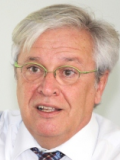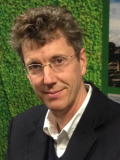
In September 2015, the UN Assembly unanimously approved its new Sustainable Development Goals. These goals replace the Millennium Development Goals and are supposed to drive policymaking on both the national and local scale towards sustainability. The definition of the 17 Sustainable Development Goals (SDGs) and 169 Targets has been followed by a long debate to establish the set of the best fitting Indicators. In March 2016, the United Nations Inter-Agency Expert Group on SDG Indicators (UN IAEG SDGs), at the 47th session of the UN Statistical Commission ‘Better Data Better Lives’, presented its report (UN IAEG SDGs, 2016) for a final agreement on the indicators selected after a multi-step consultation process. These indicators are the ones to be measured in the near future to assess progress towards sustainable development.

If urbanisation is one of the most important global trends of the 21st century, with some 70% of the world’s population forecasted to live in cities by 2050, then urbanisation in Africa – and the ways in which that growth occurs – marks one of the most significant opportunities for achieving global sustainable development.
By 2050, cities in the developing world will absorb more than two billion new urban residents, representing 95% of global urban growth. African cities will take the lion’s share, in some cases increasing twice as fast as any other urban population worldwide. By mid-century, the urban population in sub-Saharan Africa alone is expected to quadruple, ushering in 1.15 billion new urban residents. How Africa prepares for its urban future will have far-reaching social, economic and environmental impacts – not only for the continent, but also for the world.


For a long time, the international community has talked about the benefits that can be created by removing wasteful fossil-fuel subsidies and freeing up expenditure for more worthwhile things—but little analysis has looked at how this works out in practice.
In large part, this is because so few countries, including among the G-20, have implemented ambitious and successful reforms. It’s also because governments don’t tend to explicitly reallocate subsidy savings. Typically, all available revenue is simply pooled together and it can be challenging to associate a decrease in one area with an increase in another.
Indonesia’s recent experiences, however, offer some rare insights into this aspect of reform. In 2015, over US$ 15 billion were saved on fuel subsidies due a combination of price increases and low world oil prices. Thanks to fortunate timing, two budgets were drawn up: one, with full-cost subsidies; and one in the light of subsidy savings.


The second half of 2015 yielded two critical global agreements relevant to green growth that will shape the work of governments and global institutions in the coming years, if not decades. The first was the adoption of the 2030 Agenda for Sustainable Development and the Sustainable Development Goals (SDGs), which commit countries to specific goals and targets for achieving the economic, social and environmental dimensions of sustainable development. The second was the Paris Agreement on climate change, which includes specific national commitments for tackling climate change and keeping global warming below dangerous levels.
As governments and organisations turn their attention from the negotiated text to on-the-ground implementation and action, the Green Growth Knowledge Platform’s (GGKP) objectives of encouraging widespread collaboration, addressing knowledge and data gaps, and supporting practitioners and policymakers with the latest analysis and data, are more relevant and necessary than ever.

Thirty years ago, as concerns grew in Sweden about pollution appearing downstream from pulp and paper mills, local firms developed chlorine-free pulp bleaching technologies. These technologies helped protect fish and ecosystems. They also opened up new markets in Germany for the Swedish firms’ more-environmentally-friendly products and attracted foreign customers for the clean technology itself. A win for Sweden’s environment and its economy.
Clean innovation like this has been helping address environmental challenges and drive economic growth for some time. But one of the interesting things about the Swedish success story is the research that shows how environmental regulation helped make it happen.
Yes, you heard me right. Regulation was partly responsible for this case of economic growth.

As I started my day on Friday, May 27th – the last day of the United Nations Environment Assembly (UNEA-2) in Nairobi – with a run through the Karura Forest Reserve, just behind the UN compound, I marveled at the broad African sky and all that bustled into life underneath it.
It had been an incredible week. Little noticed in the press as President Obama made his way to Hiroshima, marking 70 years since that inflection point in our history, ministers from around the world descended on Nairobi for a very different conversation: how to address the common challenge of delivering on environmental sustainability, and in particular its central and underpinning role in the newly adopted 2030 Agenda for Sustainable Development.

The European Commission research programs in partnership with Udayana University and the Indonesia Climate Change Trust Fund recently conducted an international workshop in Bali to discuss a wide range of issues related to bioenergy.
The workshop on sustainability and bioenergy provided an opportunity to analyze the sustainable business and climate resilience of low-carbon transition pathways comprising bioenergy made from crop waste and residue.
The topic remains relevant with the government’s program to boost exports of its agriculture-based products from the processed food and beverage industries in Indonesia. The government plans to develop up to 400,000 hectares of new fruit plantations across the country in the next few years in an attempt to improve both the quantity and quality of local fruit production, to boost exports and survive amid competition against imported products. This plan promotes an energy-agriculture nexus particularly in bioenergy pathways in Indonesia, as fruit waste can also be used to produce biofuel.

The US government argues that the Trans-Pacific Partnership (TPP), concluded last October with 11 other Pacific Rim countries, “includes the most robust enforceable environment commitments of any trade agreement in history.” But is this really the case? The TPP undoubtedly goes well beyond the multilateral trade rules found in the WTO’s General Agreement on Trade and Tariffs (GATT-1994) that treats environmental protection merely as legitimate grounds for exceptions to trade liberalisation. In the last decade, however, several other bilateral and regional trade agreements have been signed containing stringent and comprehensive environmental commitments. To what extent is the TPP really breaking new ground when compared with these other recent trade deals?
